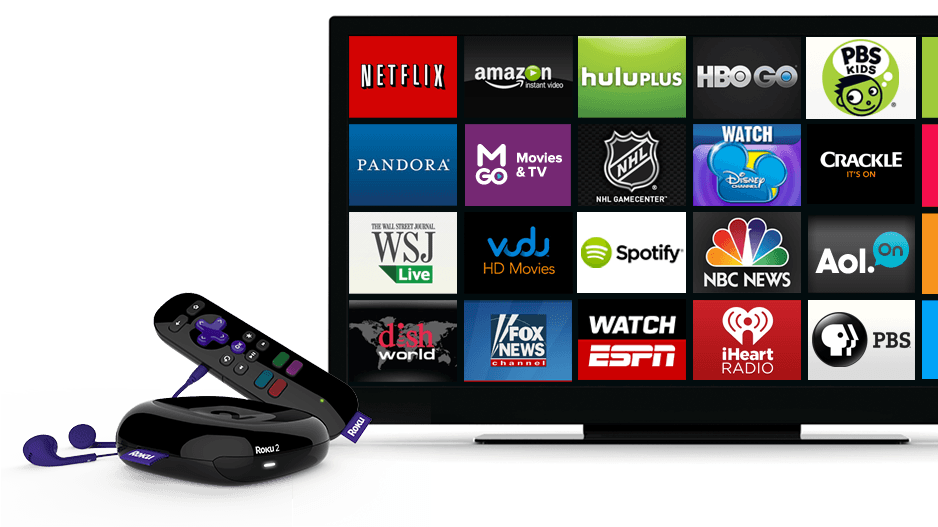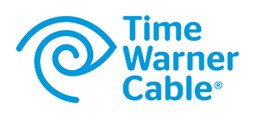
Roku
Time Warner Cable is preparing to solve one of its customers’ biggest annoyances — the expensive and unruly set-top box — by getting rid of them for customers who don’t want them.
CED reports Time Warner Cable provided insight into its “Boxless Home” project at the SCTE Rocky Mountain symposium held last week in Denver.
“One of the projects that I lead is called Boxless Homes where we can take a different device and use it instead of our set-top boxes,” said Time Warner’s Louis Williamson. “We’ve actually addressed the big screen with the Roku. We’ve launched it but we haven’t officially launched what we call our Boxless Homes because its missing a couple of the key Title 6 requirements. and the most important one we’re trying to get working right now is secondary audio. We have closed captioning and other things in it.”
The new project would let subscribers pack up and return their current set-top boxes (not DVRs just yet) and replace them with Internet-enabled Roku, Xbox, and Samsung Smart TVs, potentially saving customers close to $100 a year or more. It is part of the broad transition away from analog service cable companies are making as they gradually move towards IP distribution of content — creating one large broadband pipe across which cable television, Internet access, and phone service will travel.
“We describe things like the iPhones, and iPads and other stuff as companion devices,” Williamson added. “You can use them with your TV, they work as remotes and they’re good for looking at TV for a bit. When you go to something that fits on the big screen, the 10-foot experience like a Roku or the Xbox, or our work we’ve done as an app on Samsung TV that does [live TV and video-on-demand], that’s where we look at as Boxless Homes. You don’t have to have one our boxes; you can use one of those devices as outlets in your home. We’ve been driving heavily to get to that point where we can enable all of our services on a device that is theirs. In a couple of markets the channel lineup is pretty much there except for the transactional video on demand. It’s just getting all the Title 6 compliance in and a good marketing strategy around how you drive it.”
Time Warner management likes the initiative because set-top box equipment is costly to buy and support and many customers would prefer to do away with the frustration and cost of extra equipment, especially when many cable set-top boxes installed in homes before Jan. 1, 2014 use more electricity than a home refrigerator, consuming an average of 446kWh hours each (about $50 a year per box, depending on local energy costs).
Time Warner Cable customers looking to save money already have the option of returning their old energy vampire set-top boxes for one of several new models Time Warner has introduced this year. Contact your local office to find the Time Warner set-top boxes available for service in your area:
|
Make
|
Model
|
Type
|
Features
|
On Power (W)
|
Sleep Power (W)
|
APD Power (W)
|
Total Electric Consumption (kWh/yr)
|
|---|---|---|---|---|---|---|---|
| Motorola | DCX3510-M | Cable | APD, AVP, CC, DVR, D2, HD, MR, MS | 22.8 | 18.3 | 18.3 | 172 |
| Motorola | DCX3200-M | Cable | APD, AVP, CC, D2, HD, HNI | 14.3 | 11.7 | 11.6 | 110 |
| Cisco | 8742HDC | Cable | APD, AVP, CC, DVR, D2, HD, MR, MS | 21.7 | 18.4 | 18.4 | 170 |
| Cisco | 4742HDC | Cable | APD, AVP, CC, D2, HD, HNI | 18.8 | 14.1 | 14.1 | 136 |
| Samsung | SMT-H3272 | Cable | APD, AVP, CC, DVR, D2, HD, MR, MS | 30.3 | 25.8 | 25.8 | 239 |
| Samsung | SMT-H3362 | Cable | APD, AVP, CC, D2, HD, HNI | 14.7 | 13.3 | 13.3 | 120 |
Feature Key
|
Shortcut
|
Feature Name
|
|---|---|
| APD | Automatic Power Down enabled by default |
| AVP | Advanced Video Processing |
| CC | CableCARD |
| D2 | DOCSIS 2.0 |
| D3 | DOCSIS 3.0 |
| DVR | Digital Video Recorder |
| HD | High Definition |
| HNI | Home Networking Interface |
| MR | Multi-room |
| MS | Multi-stream |
| XCD | Transcoding |
For now, Time Warner expects most of those going box-less will be in the under-30 age demographic. They already have game consoles or Internet-enabled set-top boxes like Roku and are comfortable switching in and out of the Time Warner Cable TV app.
 “I think its to early to say how its going to impact the traditional world,” Williamson said in response to a question about whether Boxless Homes will replace traditional MPEG-2 services or augment them. “Currently we don’t even market it or tell anyone about it. The IP video stuff has rolled out word of month. These are the early adopters who are understanding that there’s a TWC app that goes on the Roku box. They decide to go down to their kid’s room or somewhere else and make that their secondary outlet. That’s how it’s evolving now. I think as it gets more and more prevalent and we get on more and more devices, which is going to take time, then its going to be more interesting. Our app on Samsung TV is much closer to our same look and feel as on our se-sop box. Unfortunately these are the real high-end Samsung TVs with the smart hub technology and things like that. There’s not enough of them to understand what the impact is on our footprint.”
“I think its to early to say how its going to impact the traditional world,” Williamson said in response to a question about whether Boxless Homes will replace traditional MPEG-2 services or augment them. “Currently we don’t even market it or tell anyone about it. The IP video stuff has rolled out word of month. These are the early adopters who are understanding that there’s a TWC app that goes on the Roku box. They decide to go down to their kid’s room or somewhere else and make that their secondary outlet. That’s how it’s evolving now. I think as it gets more and more prevalent and we get on more and more devices, which is going to take time, then its going to be more interesting. Our app on Samsung TV is much closer to our same look and feel as on our se-sop box. Unfortunately these are the real high-end Samsung TVs with the smart hub technology and things like that. There’s not enough of them to understand what the impact is on our footprint.”
Comcast is also working on a box-less approach, but only for college campuses. Its “XFINITY on Campus” project offers streaming cable TV over students’ laptops or portable devices exclusively while on campus. The service is now limited to Emerson College, Drexel University, University of New Hampshire, Lasell College, and MIT. Comcast currently has no plans to offer box-less service to residential subscribers.
[flv]http://www.phillipdampier.com/video/BTIG Demo of New TWC TV App on Roku 12-23-13.flv[/flv]
Rich Greenfield at BTIG Research produced this hands-on demonstration and review of the TWC on Roku app. (6:23)


 Subscribe
Subscribe
What is old is new again. Here we come ‘cable ready tvs’….
What’s the catch? They’re not going to give up those tens of millions of dollars in cable box and DTA monthly fee’s…
Few understand that the revolution started 30 years ago in the core WAN was about: -analog vs digital -vertical vs horizontal -packet vs circuit -monopoly vs competition We’re finally seeing these trends play out in the last mile of access, or edge of “the network”, or the MAN. The very rapidly approaching future is: -4/8K VoD -2-way HD video collaboration -seamless mobile BB -IoT For edge access providers to take advantage of these trends (and the core providers as well) we need a fundamental rethink of network architectures and pricing/performance wrt: -capacity (particularly upstream) -latency -QoS -security -redundancy All of… Read more »
Here is the catch, if you have a variety pack you can no longer get that. So you need the cable box. Atleast that is what i have researched thus far